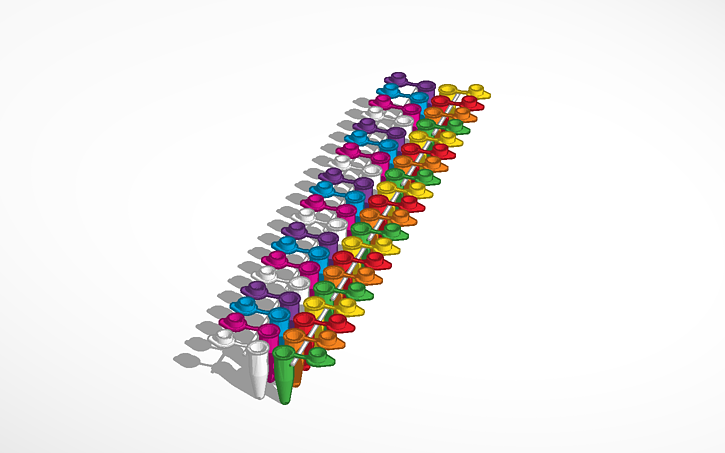BME100 f2013:W900 Group2 L6
| Home People Lab Write-Up 1 | Lab Write-Up 2 | Lab Write-Up 3 Lab Write-Up 4 | Lab Write-Up 5 | Lab Write-Up 6 Course Logistics For Instructors Photos Wiki Editing Help | ||||
OUR COMPANY
LAB 6 WRITE-UPComputer-Aided DesignTinkerCAD TinkerCAD is an online program that allows the user to design and create whatever object they want. On TinkerCAD, the user is able to change dimensions, color, and geometry of numerous shapes. In this lab, TinkerCAD was used to redesign PCR tubes to improve the design in various aspects:
Implications of Using TinkerCAD for Design On TinkerCAD, virtually anything can be designed. Even better, the design can be printed out with a 3D printer. This idea is revolutionary because in today's market, specialty designs, like a child's prosthetic, takes extremely long to build and receive. With TinkerCAD and the help of a 3D printer, the specific prosthetic design can be built within possibly an hour for the certain child. All the doctor needs to do is enter in the specific dimensions and the device will be ready to use.
Feature 1: Cancer SNP-Specific PrimersBackground on the cancer-associated mutation SNP stands for single nucleotide polymorphism. Nucleotides are the building blocks of DNA. Polymorphism is a nucleotide within DNA that differs between members of the same species. An example of a SNP is rss1789961. The species that the SNP belongs are Homo Sapiens (Humans) and the clinical significance of this SNP is that it is pathogenic. Rss1789961 is on chromosome number 22 and humans typically have 23 pairs of chromosomes. The affected gene of rss1789961 is CHEK 2, which is a gene encoded with a protein that is a cycle checkpoint regulator and a putative tumor suppressor. Primer design
How the primers work:The PCR warming up to 95° C allows for the DNA to denature and creates two single strands of DNA. Then,it is cooled to 57° C, the DNA anneals and the primer binds to the single strand of DNA. Primers are designed to match a specific nucleotide sequence to a complementary DNA strand. In this lab, once a primer locates a single strand of DNA that contains a cancer-associated SNP and it binds onto the DNA. The Taq polymerase further connects the two together, encodes the DNA and begins attaching complementary nucleotides to make copies. Primers that are cancer-sequence specific will only completely bind to a cancer SNP-containing template and the forward primer will only bind to its complementary template. If a template does not contain a cancer "marker" or SNP, the cancer-sequence specific primer will not bind to that template. Since the primer is unable to attach to the DNA, Taq Polymerase cannot bind to the non-cancer alleles and add complementary nucleotides to make more copies .This means that only the DNA that contains the SNP, rs17879961 will be amplified.
Feature 2: Consumables KitAll of the consumables will be packaged in a styrofoam holder inside the kit to avoid damage due to distribution. Everything in the kit will be labeled and the plastics that hold the reagents will be durable and inexpensive. The kit will also be appealing on the exterior with the company name and name of the product. There will be a significant amount of reagents so the user doesn't need to refill often. The kit will also include a micropipettor and an instruction manual.
Feature 3: PCR Machine HardwareOur PCR Machine will be packaged safely, with all parts already in place. These parts include the power supply, circuit board, heat sink, cooling fan, LED screen and a heating lid. Make sure to handle the PCR Machine with care.
Feature 4: Fluorimeter HardwareThe fluorimeter hardware will be neatly packaged in the box with everything else. The fluorimeter system includes:
Our fluorimeter system will consist of a small dark box (since the original box is very big and inefficient) that includes an HD camera set up inside with correct, permanent measurements so the image can be easily and accurately analyzed. The HD camera is focused on the area of the illuminated slide via the blue light to achieve reliable images. Once the camera takes the picture, it automatically measures it and sends them to your computer via USB. The fluorimeter slide automatically cleans itself off when initiated to reduce waste of slides. To use the fluorimeter system, first press the start button which lifts the slide holder from inside the box. Then load the slide with the desired concentration and press the begin button which lowers the slide (and also closes the box) to the designated area of where the camera takes an accurate photo. After that, send the data to your computer through the USB drive and then press the clear button which cleans the slide. Repeat the steps for other desired concentrations.
Bonus Opportunity: What Bayesian Stats Imply About The BME100 Diagnostic ApproachIn this lab, the CHEK2 gene is amplified and used to predict cancer. Bayers equations are used to determine the reliability the PCR tests done in the lab. More reliable test results such as a cancer biopsy was used to determine whether or not a person has cancer. The success of the CHEK2 gene PCR results in predicting cancer is based on whether or not it matches the results of the biopsy. Calculation #3 measures the sensitivity of predicting cancer. In other words,the likelihood a patient with cancer will be given a positive cancer PCR sample. This calculation factors in the percentage of patients that have cancer determined by the biopsy, the percentage of patients that have a positive PCR test and the percentage of cancer patients that have a positive cancer biopsy and a positive PCR result. The closer this calculation is to one, the more accurate the PCR test is in predicting a person has cancer.Vice Versus,the smaller the number the less accurate the PCR is because a greater number of patients with cancer receive a negative PCR test. Calculation #4 measures the specificity of predicting cancer. Similar to calculation #3 in determining the reliability of PCR testing, calculation #4 measures the likelihood a patient that does not have cancer be given a negative cancer PCR sample. This calculation factors in the percentage of patients that do not have or show any signs of cancer determined by the biopsy or other tests , the percentage of patients that have a negative PCR test and the percentage of patients that do not have cancer, given a negative PCR result. The closer this calculation is to one, the better the PCR test is in predicting a person does not have cancer. On the other hand,the smaller the number, the less successful the PCR test is because a greater number of patients that do not have cancer were given a positive PCR test. Referenceshttp://www.biocompare.com/Editorial-Articles/41635-Fast-er-PCR/ |
||||




